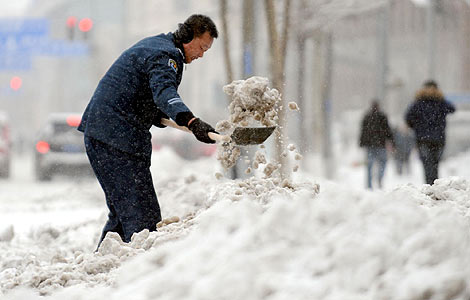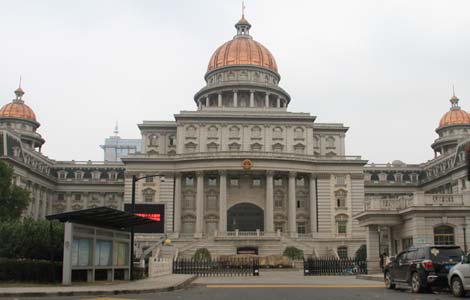
China may further cut the reserve requirement ratio for commercial lenders rather than lower interest rates before the end of 2012, said a former adviser to the monetary policy committee of the People's Bank of China on Friday.
Li Daokui, who is also a professor at Tsinghua University, said in the short term, RRR cuts are more effective than interest rate reductions as liquidity will still tighten from increased desire to exchange yuan for foreign currencies such as the dollar.
He made the remarks while attending the Asia-Pacific Economic Cooperation (APEC) China CEO Forum in Beijing.
"Lowering the RRR is an effective measure to counter the negative influence of a decline in foreign exchange reserves on the monetary base."
And the fact that inflation is no longer a top concern has left more room for further cuts, he said.
China's inflation will ease to about 3.1 percent in May before moderating to 2.6 percent in July, according to Li.
Throughout the year, inflation will be below 3.1 percent, he said. The figure moderated to 3.4 percent in April, in line with market expectations, compared with March's 3.6 percent.
Li said the GDP growth rate will start to rebound in the third quarter and reach about 8.2 percent by year-end.
"The new round of stimulus will be different from the 4-trillion-yuan ($627.5 billion) package in 2008 and 2009. It will be pragmatic, diverse, and more targeted at the goods and services industries."
In the first quarter this year, China reported its lowest growth rate in almost three years as GDP rose 8.1 percent.
The economy continued weakening in April, as growth in exports halved, industrial production registered its lowest rate in three years, and retail sales declined by more than 1 percentage point.
Zheng Xinli, vice-chairman of the China Center for International Economic Exchanges, said the growth rate of the world's second-largest economy might even decline to below 7 percent if industrial output continues to lose steam.
To shore up the softening economy, the PBOC announced on Thursday that it will lower interest rates for commercial lenders by 25 basis points, the first cut since 2008.
It cut the RRR three times since November to encourage banks to lend more, which would increase liquidity in the market.







